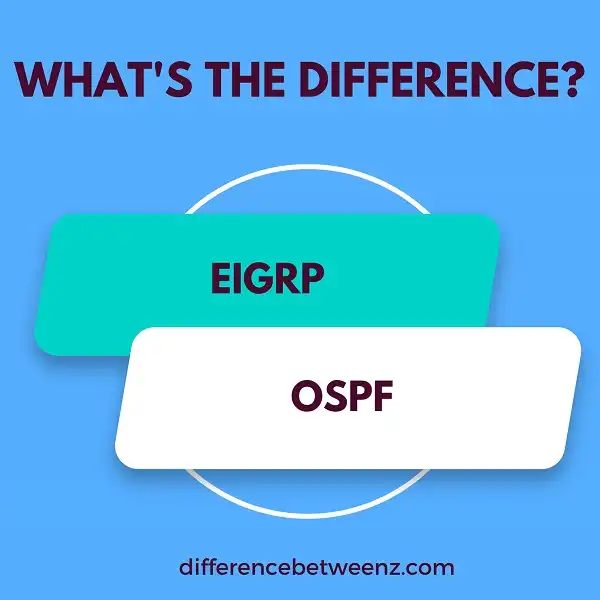EIGRP and OSPF are two popular routing protocols used in today’s networks. Though both protocols are similar in many ways, there are some key differences that you should understand before choosing which protocol to use in your network. In this blog post, we’ll take a closer look at these differences and help you decide which protocol is right for your network.
What is EIGRP?
- EIGRP is a Cisco proprietary Interior Gateway Protocol (IGP) that provides fast convergence, low network overhead, and scalability. EIGRP is a Distance Vector protocol that uses the Diffusing Update Algorithm (DUAL) to find the best path to each destination.
- EIGRP maintains a topology table of the best paths to each destination and uses this information to determine the best path to each destination. EIGRP sends updates when there is a change in the network topology. EIGRPNeighbors are adjacent routers that are running EIGRP and have exchanged EIGRP routing updates.
- EIGRP uses two types of packets to exchange information: Hello packets and update packets. Hello, packets are used to establish and maintain adjacencies with EIGRP neighbors. Update packets are used to exchange routing information between EIGRP neighbors.
- EIGRP utilizes an efficient method of routing called “Query” and “Reply”. When a router needs information about a destination for which it does not have a route, it sends out a Query packet requesting information from its neighbors. The neighbor’s reply with their own Reply packets, which contain information about the requested destination.
What is OSPF?
- OSPF (Open Shortest Path First) is a link-state routing protocol that is used to route traffic within a single Autonomous System (AS). OSPF works by building a topological map of the network, which it then uses to calculate the shortest path to each destination. OSPF is a classless routing protocol, meaning that it can support networks of any size and complexity.
- OSPF is also capable of load balancing across multiple paths. OSPF is widely used in enterprise networks and is considered to be one of the most robust and stable routing protocols. OSPF is a standardized protocol, which means that it is compatible with a wide range of networking equipment.
- OSPF is typically configured manually, although some routers support Dynamic OSPF, which allows OSPF to be automatically configured and updated. OSPF is an efficient routing protocol that offers many advantages over other protocols, such as RIP (Routing Information Protocol). OSPF is a complex protocol, but it can be quickly mastered with little effort.
Difference between EIGRP and OSPF
EIGRP (Enhanced Interior Gateway Routing Protocol) and OSPF (Open Shortest Path First) are two of the most popular routing protocols in use today. EIGRP is a Cisco proprietary protocol, while OSPF is an open standard. EIGRP uses a distance-vector algorithm, while OSPF uses a link-state algorithm. EIGRP converges faster than OSPF in most cases. EIGRP employs stub routing by default, while OSPF does not. EIGRP supports unequal cost load balancing, while OSPF supports only equal-cost load balancing. EIGRP uses 256 equal-cost paths by default, while OSPF uses up to 64 equal-cost paths.
EIGRP sends updates only when there is a change in the network, while OSPF sends updates periodically whether or not there is a change in the network. EIGRP has low overhead and scales well, while OSPF has high overhead but scales poorly. EIGRP supports manual summarization, while OSPF does not. EIGRP Authentication can be done using MD5 or text strings, while OSPF Authentication can be done only using MD5.
Conclusion
The two protocols are similar in some ways, but also have distinct differences. EIGRP is more efficient when it comes to bandwidth usage and can scale to larger networks, while OSPF is better at handling complex network topologies. Ultimately, the best protocol for your specific network will depend on a variety of factors.


